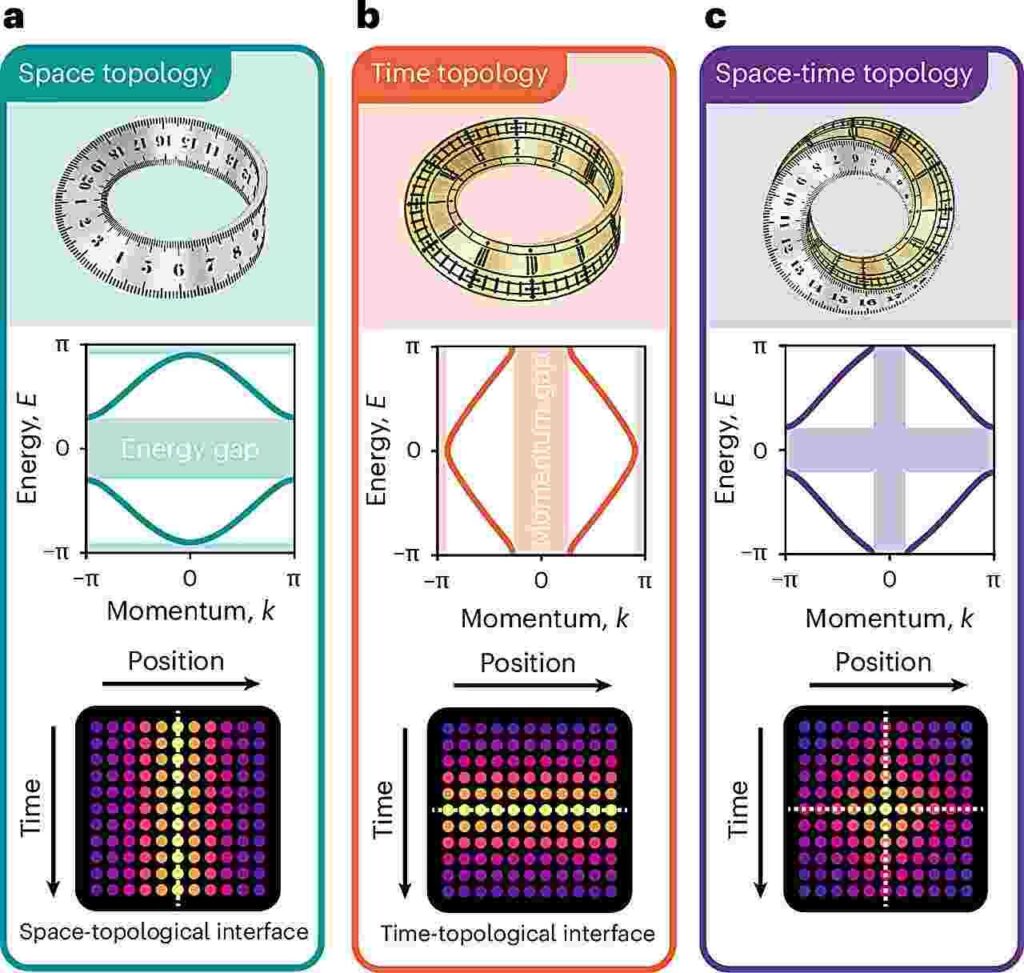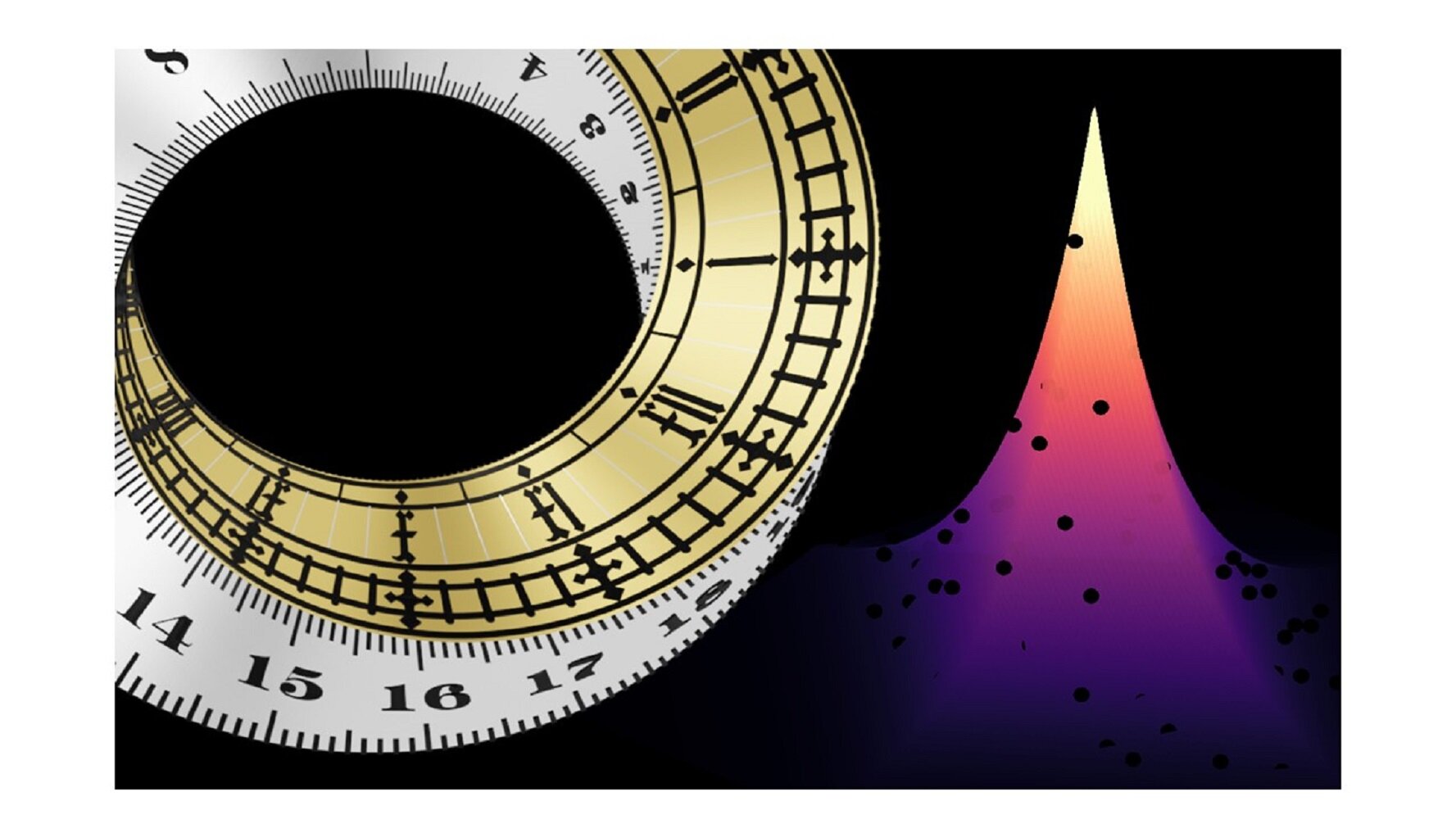By breaking a decades-old paradigm and rethinking the role that the dimension of time plays in physics, researchers from the University of Rostock and the University of Birmingham have discovered novel flashes of light that come from and go into nothingness—like magic at first glance but with deep mathematical roots that protect against all kinds of outside perturbations. Their findings have now been published in the journal Nature Photonics.
Time is the strange dimension: Unlike its spatial siblings, it is a one-way street as the clock only ever ticks forward and never backward. Scientists have long been aware of time’s quirks, with the British astrophysicist Sir Arthur Eddington musing about this “arrow of time” in his 1927 lectures. Nevertheless, whether it be because of or despite its uniqueness, time as a dimension for physics to play out in has long received far less attention than space.
Recently though, rapid progress in the research on so-called spatiotemporal crystals, objects with repeating patterns in time and space, has inspired a rethinking of the role time should play in our understanding of physics. Additionally, this has spawned the question of whether the uniqueness of time can be more than a mere quirk and instead lead to new effects ultimately useful in applications.
Now, a team of researchers from the University of Rostock and the University of Birmingham has taken up this challenge and made a crucial discovery: In their experiments, light is brought to appear glued to a singular point in space-time. “It’s almost biblical: In the beginning, there is nothing. Then physics says, ‘Let there be light!,’ and there actually is light—at one precise moment in time and point in space,” says Prof. Alexander Szameit of the University of Rostock.

These fleeting flashes of light, however short, are no accident, but instead have deep mathematical roots, elaborates Prof. Hannah Price of the University of Birmingham: “Topology, a perhaps rather abstract but very fundamental and deeply consequential branch of mathematics, actually mandates certain physical behavior here.”
Because of this and due to the one-way nature of time, such space-time-topological events, as they are called, also exhibit a unique robustness against outside perturbations: The researchers found that they come with an inherent protection against randomly messed-up experimental parameters as well as stray light.
“This is something seemingly all previously known states of light are susceptible to,” Dr. Joshua Feis of the University of Rostock explains.
Dr. Sebastian Weidemann, also from the University of Rostock, adds, “Such protection is very desirable as it may allow the robust shaping of light waves in key applications such as imaging, communications or lasers.”
These findings prove the potential that reconsidering the role of time in space-time, in physics in general as well as in its interplay with topology, has for both fundamental science as well as potential applications. Crucially, they open the door to a much wider field of potential discoveries enabled by directing research into this new-old dimension.
Reference: Joshua Feis et al, Space-time-topological events in photonic quantum walks, Nature Photonics (2025). DOI: 10.1038/s41566-025-01653-w
